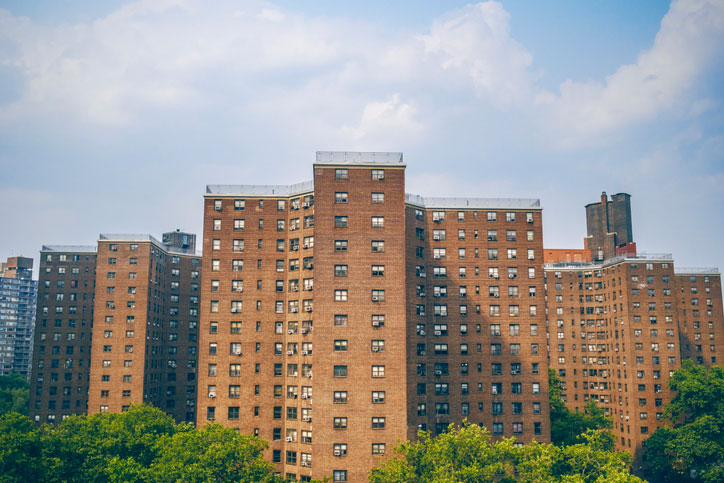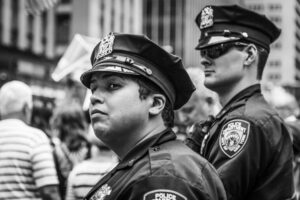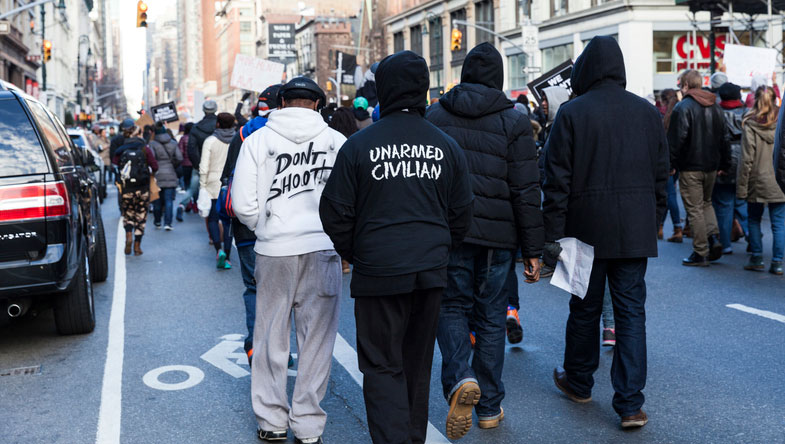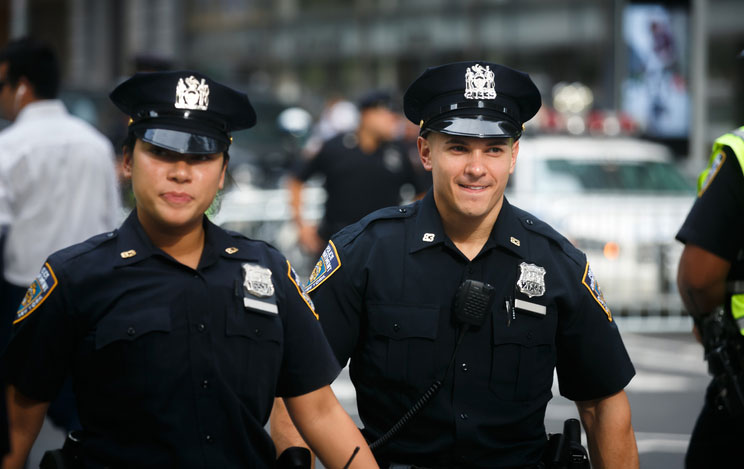Written by Scott Wilson
Hundreds if not thousands of social workers in New York took to the streets in the wake of the police killings of Eric Garner, Tamir Rice, and George Floyd. The senseless murders they protested were just the tip of the iceberg: police violence, in particular against minority and impoverished parts of the population, is common and constant.
And every person who loses their life needlessly like Amadou Diallo there are thousands out there like Abner Louima who aren’t killed but undergo abuses under the color of police authority.
Even when no physical injury is sustained, the impact of a criminal record, of court time, of egregious fines, of towed vehicles and revoked licenses can wreak havoc in lives that are already precarious.
Every social worker in New York knows to stand against such injustice.
But increasing numbers have begun to ask how clean their own hands are in the cycle of injustice.
Social Workers in New York Consider Alternatives to Involving the Police
Jazmine Headley just wanted to know why her childcare benefits had suddenly been cut off.
A single mother working hard to make ends meet, she relied on New York ACS child care vouchers to pay for someone to watch her child while she worked. Suddenly, that money dried up with no explanation. With no choice but to take time off work and bring her son with her, Jazmine headed to a nearby HRA (Human Resources Administration) office to straighten the situation out.
She left in handcuffs, without her son, after having him ripped from her arms by NYPD officers.
Those officers hadn’t just appeared from thin air and picked out Ms. Headley at random, however. They’d been called by workers at the very HRA office she was trying to get help from… human services professionals who had objected to Ms. Headley sitting on the floor even though they hadn’t provided enough chairs in the waiting area.
Jazmine Headley’s case is hardly an isolated incident. It’s a rare social worker in New York’s homeless shelter system that hasn’t had to call the police on clients that have gotten out of hand or violated shelter rules. Maybe even as early as the field experience component of your MSW program, you learn quickly that no level of crisis management or de-escalation education can talk down some substance abuse or mental health patients.
Other social workers may find themselves torn in certain situations even in the course of performing standard job duties. Administering urinalysis tests that may disqualify clients from support programs, or reporting violations of parenting or parole agreements that can result in jail time or the removal of children from homes.
Social workers in jails and prisons may be confronted with the sense that they within a large machine of inhumane punishment. With few therapeutic tools at their disposal, some have reported feeling that they are presented as examples that the system is making an effort to care for inmates even when little is being accomplished.
Some Minority Neighborhoods Have Real Apprehensions About Child and Family Services

Social workers have had to grapple with the realization that simply defunding the police isn’t going to displace the violence that the state may exercise against ordinary people. And they are also coming to grips with the idea that many social workers themselves, as agents of the state, have an important role to play in preventing that violence.
Nowhere is the debate over the role of social work in state authority harder to confront than in NYC’s Administration for Children’s Services (ACS).
Childcare social workers in New York have tremendous authority to investigate, make determinations of neglect, and ultimately remove children from their families. In many ways, this exceeds the authority of the police themselves.
Just as with the power of the police, the idea is that this authority is exercised for the good of society and for the children in particular. And just as with the police, the reality doesn’t always live up to the ideals. In New York, with mandatory training and reporting requirements for cases of suspected abuse, social workers are obligated to call police in cases where they see signs of abuse.
But just like when a cop mistakes a cell phone for a handgun, those suspicions aren’t always correct.
In New York City, Black families are six times more likely to be investigated by CPS social workers and eleven times more likely to have a child removed by those social workers than white families.
The complexity of such cases means that social workers may make mistakes. And the people they are supposed to be protecting pay the price.
Does Involving Social Workers in Policing Improve Outcomes?
This is all of interest to New York social workers today as they are being asked to increasingly step up to offer an alternative to police responses in cases of mental, behavioral, or substance abuse calls.
B-HEARD, the NYC Office of Community Mental Health emergency response pilot program, staffed by medics and mental health professionals, including licensed social workers, transports nearly 60 percent of their patients to hospitals… the same place they would end up if police or paramedics were the first responders.
Like many such programs, B-HEARD is more or less inspired by the CAHOOTS (Crisis Assistance Helping out on the Streets) program started in Eugene, Oregon in 1989. CAHOOTS puts two-person response teams on the police radio net, where they are dispatched to both 911 and non-emergency calls involved behavioral health crises. The teams are empowered to offer intervention, counseling, first aid, or transport to social services… on an entirely voluntary basis.
Voluntary is the crux, however. Not all individuals in crisis have the capacity or the willingness to engage. And it’s not always possible or safe to leave them alone.
Testimony from the Disability Justice Program of the New York Lawyers for the Public Interest in 2023 asserted that B-HEARD was actively increasing the rate of violent responses from NYPD… all while diverting resources from more voluntary, community-oriented treatment options.
Pushback Against B-HEARD is Rooted in Concerns Over Systemic Violence
 Not all social workers have been supportive of programs like B-HEARD. Instead, they suspect that social workers sent to respond to critical incidents are part of a coercive system that functions to punish, not help, already marginalized communities.
Not all social workers have been supportive of programs like B-HEARD. Instead, they suspect that social workers sent to respond to critical incidents are part of a coercive system that functions to punish, not help, already marginalized communities.
When they hear about efforts to further integrate social workers into emergency services responses, or even replace first responders with social workers, they instead see just another gateway through which marginalized patients are thrown into a system that further devalues and abuses them.
In this view, the proper role of social workers is to tear down that system, not to engage with it. Any participation is complicity with racism and oppression.
The complication, of course, is that the system is where the resources are. And for social workers who see themselves as defenders of the oppressed, there are few answers outside of complete revision… a revision which can’t come soon enough for people caught in the system today.
Spotting Flaws in These Programs is a Major Step Toward Finding Better Solutions

Like many social movements, the one against oppressive state violence isn’t on a linear track. The self-reflection and debate within the social work community is incredibly important. And it’s one that has only been enabled by successes in pushing to remove police from the mental and substance use treatment systems.
Ultimately, the question is an old one: are systems best changed from within, or do they need to be torn down from the outside?
That’s impossible to answer.
Even CAHOOTS, the gold standard in social work response programs that offer alternatives to policing, has been buckling under the strain of delivering such complex services. Like the police, the program has been caught in the trap of responding to situations for which its social services providers are not always the best fit.
For social workers in New York, there’s been a lot of self-reflection over the role these well-intentioned programs have ended up playing. And that reflection is the starting point for all new ideas for workable alternatives to sending people into a system that doesn’t always put their safety and welfare first.

